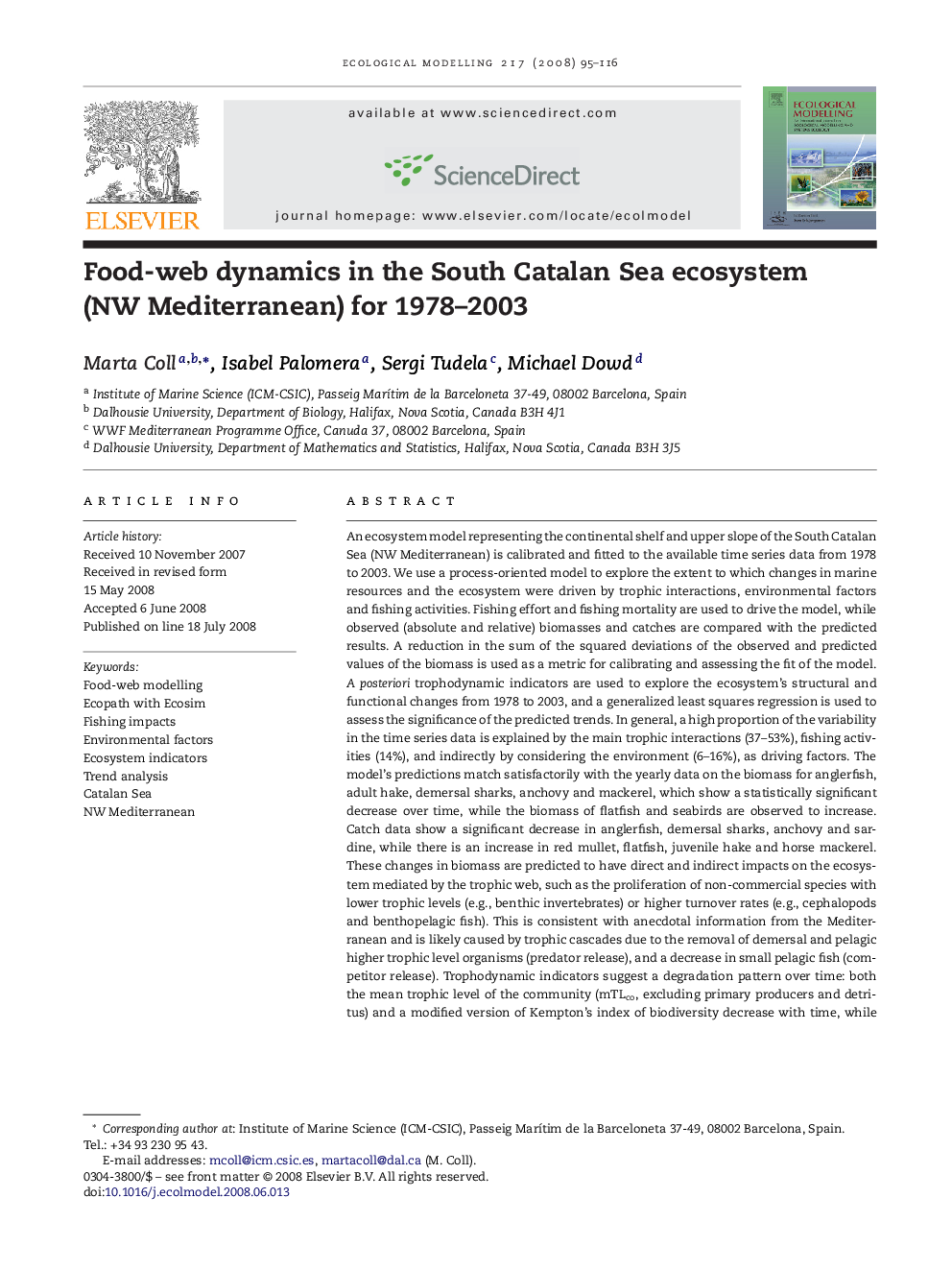| کد مقاله | کد نشریه | سال انتشار | مقاله انگلیسی | نسخه تمام متن |
|---|---|---|---|---|
| 4377785 | 1617530 | 2008 | 22 صفحه PDF | دانلود رایگان |

An ecosystem model representing the continental shelf and upper slope of the South Catalan Sea (NW Mediterranean) is calibrated and fitted to the available time series data from 1978 to 2003. We use a process-oriented model to explore the extent to which changes in marine resources and the ecosystem were driven by trophic interactions, environmental factors and fishing activities. Fishing effort and fishing mortality are used to drive the model, while observed (absolute and relative) biomasses and catches are compared with the predicted results. A reduction in the sum of the squared deviations of the observed and predicted values of the biomass is used as a metric for calibrating and assessing the fit of the model. A posteriori trophodynamic indicators are used to explore the ecosystem's structural and functional changes from 1978 to 2003, and a generalized least squares regression is used to assess the significance of the predicted trends. In general, a high proportion of the variability in the time series data is explained by the main trophic interactions (37–53%), fishing activities (14%), and indirectly by considering the environment (6–16%), as driving factors. The model's predictions match satisfactorily with the yearly data on the biomass for anglerfish, adult hake, demersal sharks, anchovy and mackerel, which show a statistically significant decrease over time, while the biomass of flatfish and seabirds are observed to increase. Catch data show a significant decrease in anglerfish, demersal sharks, anchovy and sardine, while there is an increase in red mullet, flatfish, juvenile hake and horse mackerel. These changes in biomass are predicted to have direct and indirect impacts on the ecosystem mediated by the trophic web, such as the proliferation of non-commercial species with lower trophic levels (e.g., benthic invertebrates) or higher turnover rates (e.g., cephalopods and benthopelagic fish). This is consistent with anecdotal information from the Mediterranean and is likely caused by trophic cascades due to the removal of demersal and pelagic higher trophic level organisms (predator release), and a decrease in small pelagic fish (competitor release). Trophodynamic indicators suggest a degradation pattern over time: both the mean trophic level of the community (mTLco, excluding primary producers and detritus) and a modified version of Kempton's index of biodiversity decrease with time, while the total flow to detritus and the loss of production due to fishing increase from 1978 to 2003. Additionally, the demersal/pelagic ratio increases due to an overall decrease in the abundance of small pelagic fish in the ecosystem.
Journal: Ecological Modelling - Volume 217, Issues 1–2, 24 September 2008, Pages 95–116